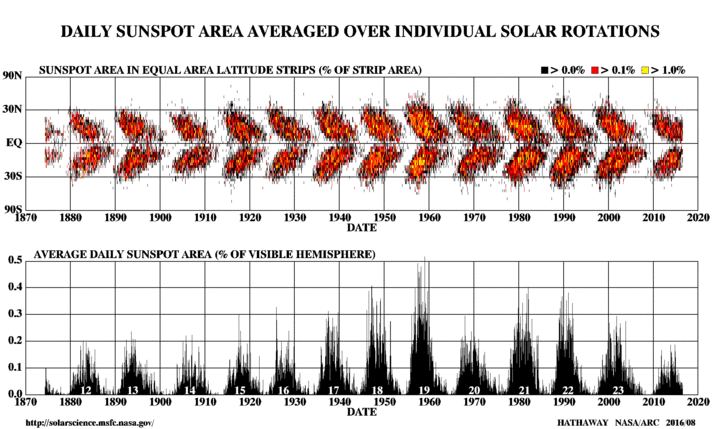Spörer's law
Spörer's law predicts the variation of sunspot latitudes during a solar cycle.[1] It was discovered by the English astronomer Richard Christopher Carrington around 1861.[2] Carrington's work was refined by the German astronomer Gustav Spörer.
At the start of a sunspot cycle, sunspots tend to appear around 30° to 45° latitude on the Sun's surface. As the cycle progresses, sunspots appear at lower and lower latitudes, until they average 15° at solar maximum. The average latitude of sunspots then continues to drift lower, down to about 7° and then while the old sunspot cycle fades, sunspots of the new cycle start appearing at high latitudes.[3]
 |
| Butterfly diagram showing paired Spörer's law behavior. |
|---|
See also
References
- ↑ Hopkins, Jeanne (1980). Glossary of astronomy and astrophysics. Chicago: University of Chicago Press. ISBN 0-226-35171-8.
- ↑ Carrington, Richard Christopher (1863). Observations of the Spots on the Sun from November 9, 1853, to March 24, 1861, Made at Redhill. London: Williams and Norgate.
- ↑ Phillips, Kenneth J. H. (1992). Guide to the Sun. Cambridge: Cambridge University Press. ISBN 0-521-39788-X.
This article is issued from Wikipedia - version of the 11/21/2014. The text is available under the Creative Commons Attribution/Share Alike but additional terms may apply for the media files.